Quick Cruise Around Fedora 7 Test 2



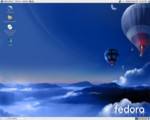 Fedora 7 test 2 was announced yesterday and since they now put out livecds as well as their install images, I thought I'd take it for a little test drive. Fedora's always been a bit neglected around here, but there are good reasons for that. Honestly, I've never been a big Red Hat fan and Anaconda discriminating against my hard drives didn't help. So, Fedora being delivered in a livecd format gives Tuxmachines a welcomed opportunity to test it.
Fedora 7 test 2 was announced yesterday and since they now put out livecds as well as their install images, I thought I'd take it for a little test drive. Fedora's always been a bit neglected around here, but there are good reasons for that. Honestly, I've never been a big Red Hat fan and Anaconda discriminating against my hard drives didn't help. So, Fedora being delivered in a livecd format gives Tuxmachines a welcomed opportunity to test it.
The Livecd
The livecd boots up to a nice looking customized grub screen with only two choices consisting of booting Fedora or loading it into ram first. One can press <Tab> to edit the boot parameters if needed. Fedora's livecd takes quite a while to boot here and one can see SELinux being implemented and lots of services. The graphics were detected really well on my HP laptop, but on my desktop I had to do a bit of coaxing, as my dual monitor setup confused it (as commonly happens with livecds). I had to edit the sparse /etc/X11/xorg.conf file in order to talk X into working. Once booted into the gnome 2.18 (2.17.91), one first notices this lovely wallpaper primarily in darker blue hues featuring several hot-air balloons flying above some clouds in a skyscape and the fedora logo. This is one of the better looking default gnome setups I've seen and the fonts look really great on both my desktop and notebook.
The System
The menu is a bit sparse. There weren't many application choices and some of those were inoperative. Fedora 7 livecd features Abiword for word processing, but it failed to open here. Instead a ghost window opens and a bug report popup soon follows. Other office applications include elements of evolution for Tasks and Calendar and gnumeric for spreadsheet work. Graphics includes The Gimp, gThumb, Inkscape and F-Spot photo manager. F-Spot crashes too. For internet tasks one has Firefox, Evolution, Gaim, and a blogger client. The vpn app wouldn't open. There were quite a few smaller 2d games included like Blackjack, Klondike, Mahjongg, Nibbles and Sudoku. 3D PPRacer is also included. Multimedia consists of Rhythmbox music player, a cd player and Totem movie player. The cd player opened one of those ghost windows and since Fedora couldn't see any of my higher partition numbers, I didn't get to test the movie player. Some accessories include an archive manager, gedit, a calculator, character map and an online dictionary.
All your basic gnome personal configuration modules are present in the menu and in the gnome-control-center. There are a few system configuration tools as well, including a SELinux Troubleshooter. My internet connection on the desktop was up at boot. The printer configuration started well displaying success in detection, couldn't finish here due to missing drivers. There were no scanner backends or applications included. Removeable media can't be mounted or umounted by the user as offered in the right-click menu of their "Computer" window because it requires root permissions to do so. There is a software updater present and it did download update availability information. I didn't test any actual updates.
This release features a 2.6.20 kernel, Xorg 7.2, and gnome 2.18.
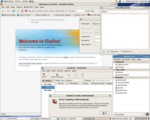
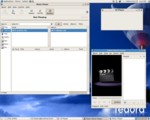
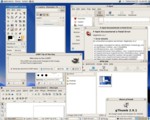
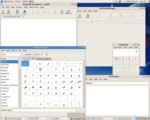
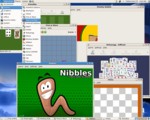

The Installer
Like the printer configuration, the hard drive installer starts off looking good. I go through the language, keymap, timezone, etc. steps and even designated a partition I knew fedora could see as /. Right before the install was to begin, I got error pop-ups about 'fedora not being able to read /dev/sda16' and on, but I could safely ignore those. However, as with all Red Hats and Fedoras since about 4.0, it couldn't finish the install and only gave a cryptic error message.
I looked into this error (assuming it was the same this time) once upon a time, and found a few questions and little answers. I recall one post stated that Red Hat/Fedora developers knew of this bug and didn't care. All I was able to ascertain at the time was that it had to do with partitioning my drive with fdisk as opposed to Red Hat's partitioning tool. I've had this happen on about 6 different harddrives of varying speeds and sizes from 4 different manufacturers. This has happened across about 3 or 4 different motherboards as well. The only successful install using Anaconda I've had in the last 5 years or so was when I had an extra small harddrive on which I deleted all partitions and let Anaconda set up new ones.
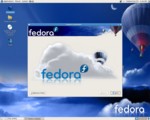
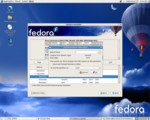
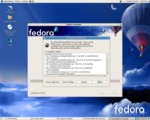
Laptop
As stated above, the graphics on the laptop were no problem. Fedora correctly detected my display and chip to give the desired resolution of 1200x800. There is a battery monitor and ac/battery profile configuration that seems to work. There also seemed to be cpufreq present and working. However, suspend and hibernate didn't work, but perhaps that was due to being run off livecd. The biggest issue for me was not being able to get my wireless connection working. The linux drivers for chipsets similar to mine don't work for me. I try them each distro to be sure, and indeed they didn't work with Fedora. That's not usually a problem, but what was a problem is the missing ndiswrapper tools. I couldn't seem to find hide nor hair of it, of course I could have missed it as there didn't seem to be a (s)locate present either.
Conclusion
Perhaps my disappointment in Fedora came through in the above information. I try to be objective, but sometimes distros don't just live up to their reputations or the perceived expectations. This was one of those times. Fedora 7 livecd looks good with it's nice wallpaper, customized gnome theme, and pretty fonts, but it just didn't seem to offer a whole lot besides. Apps were quite sparse even for a livecd. I can overlook the app crashes as this is still a test version, but the continuing installer situation is frustrating. I suppose if you are a Fedora fan or if I could actually test the real distribution it might be different. As it is, I'm just not impressed with Fedora 7 beyond its appearance.
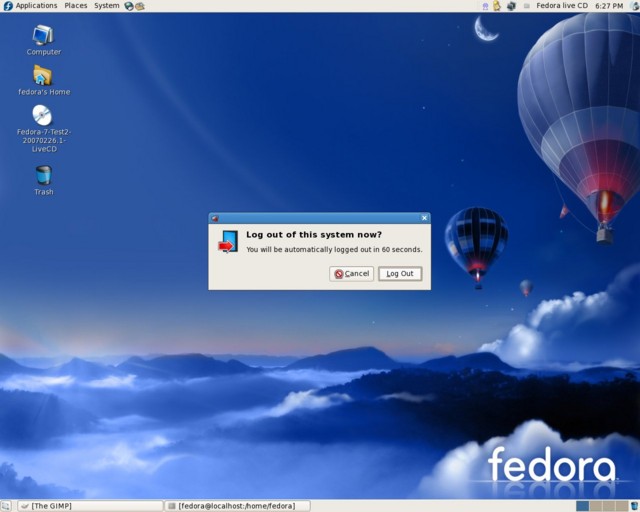
-

- Login or register to post comments
 Printer-friendly version
Printer-friendly version- 39024 reads
 PDF version
PDF version
More in Tux Machines
- Highlights
- Front Page
- Latest Headlines
- Archive
- Recent comments
- All-Time Popular Stories
- Hot Topics
- New Members
today's howtos
| Red Hat Hires a Blind Software Engineer to Improve Accessibility on Linux Desktop
Accessibility on a Linux desktop is not one of the strongest points to highlight. However, GNOME, one of the best desktop environments, has managed to do better comparatively (I think).
In a blog post by Christian Fredrik Schaller (Director for Desktop/Graphics, Red Hat), he mentions that they are making serious efforts to improve accessibility.
Starting with Red Hat hiring Lukas Tyrychtr, who is a blind software engineer to lead the effort in improving Red Hat Enterprise Linux, and Fedora Workstation in terms of accessibility.
|
Today in Techrights
| Android Leftovers |








.svg_.png)
 Content (where original) is available under CC-BY-SA, copyrighted by original author/s.
Content (where original) is available under CC-BY-SA, copyrighted by original author/s.

re: Fedora 7
Ouch. Fair review (sometimes the truth hurts).
Of course being a longtime Fedora user, I'm hoping the kinks will get worked out by release (which has already been announced as being pushed back at least a few weeks).
They're trying to cram alot of big changes into F7, so it could be a rocky release. I'm looking forward to KVM support and a better YUM, so I have my fingers crossed for the developers.
What about browser plugins & codecs
I've always liked the look feel of fedora but, what has always put me off is its total lack of any browser plugins, media players, required codecs and other things like the Java runtime environment. Ok, I wouldn't mind if it didn't install these things when installing but It should be an easy task to accomplish to install these from one of the install CD's after the install. There are none of these required components on any of the install Cd's. The reviewer complained the the Sidux distro didn't have these but made no mention of it in this review. Maybe it's because its a test version. I hope all is OK on the final version cos I would love to be able to use fedora. In these times its almost prehistoric not to have a user friendly distro thats easy to install, set up, install other software into & all the requirements for a full web capability/experience.
re: browser plugins & codecs
Oh, sorry. Nope, no java, flash, or movie plugins and no codecs. Can't even watch a mpg.
Susan, maybe it's not about
Susan, maybe it's not about any of the 4-5 motherboards, nor about the HDDs. Maybe it's about your 42 partitions, eh?
re: maybe it's not about
Well, I might wonder about that except I did find those posts from others with same problem and I got that error with that one smaller drive too at first until I deleted the partitions and let anaconda do its thing. it only had 4 partitions on it.
And still even if it was due to slicing my drive up into so many smaller partitions, only distros using anaconda shoot that error.
So, I don't know.
A curious live CD
There were no "hdxy" entries in /dev. So that's the first time I've ever had to mount partitions using "/dev/disk/by-label/label" rather than "/dev/hdxy". Is this the same when it's installed?
And, after installing the kernel-devel, binutils, gcc, and make packages, and specifying the path to the kernel sources, the nvidia installer didn't work. It built the module, but errored out insmod'ing it. IIRC, it complained that the kernel (2.6.20-1.2960.fc7-i686) wasn't built using the same version of the tools used to compile the module. Then it crashed to hard reset shortly after switching back to runlevel 5. Oh, well.
The new icon set and default background do look very nice.
Maybe we should have a competition with prizes for whomever guesses how many partitions s actually has on her hard drives.
re: A curious live CD
I noticed it was using /dev/sdaX on mine, which was a first. I have a sata drive in the laptop and all distros use sdaX on it, but that was the first time I got that on the desktop.
Review: Fedora 7 Test 2
On March 1, Red Hat released Fedora 7 Test 2. Here’s my quick look at the live CD version of this distro. I’ll wait until the final release to do a full install.
The live CD, downloaded here, is a nice way to test new releases of distributions without having to install the entire distribution.
First Boot
I burned the CD and put it in my desktop (no VM, as apparently the fact I test things on both my desktop natively, and on my MacBook Pro in a VM confused people on previous reviews). The boot loader came up and I picked the option to boot the Live CD to RAM. I figured with 2GB of RAM this would make things a lot faster for me.
The boot messages started scrolling and eventually X started up.
And that’s as far as it got.
Second Try